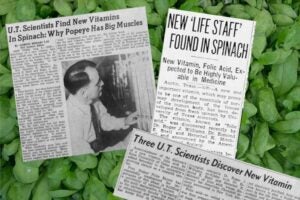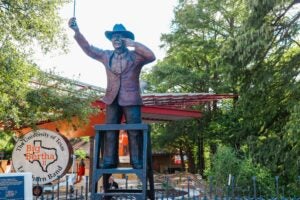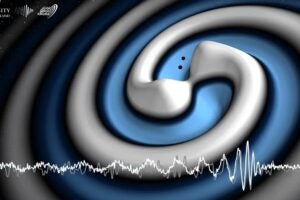AUSTIN, Texas— A promising young researcher at The University of Texas at Austin who received a $200,000 Faculty Early Career Development (CAREER) Award from the National Science Foundation will use the award to investigate soils that seem to act like quicksand during earthquakes.
Dr. Ellen M. Rathje, a 27-year-old assistant professor in the department of civil engineering, will receive up to $400,000 over a four-year period if industry matches the NSF funds. The CAREER award — one of the highest research honors a young faculty member can attain — supports exceptionally promising young university faculty committed to the integration of research and education.
Rathje will use the award to research more accurate and reliable techniques to identify potentially liquefiable subsurface soil deposits. The soils could then be avoided during the site selection process or modified during the construction phase to resist liquefaction.
Rathje said liquefaction occurs primarily in loose, sandy soils that are saturated, meaning the voids (pores) between the sand grains are completely filled with water. When earthquakes occur, the water has no time to escape, water pressure increases and liquefaction occurs. As a result, soil behaves like quicksand, losing all of its strength. Although liquefaction occurs mainly in sandy soils, it also has occurred in silty and gravelly soils, making it a problem in much of the areas of the world where earthquakes are common.
“Liquefaction of near-surface soil deposits is one of the most destructive effects associated with strong ground shaking during earthquakes,” Rathje explained. Movement of bridge foundations can cause bridge decks to fall, settling of building foundations can cause cracking in structures, and ground displacement can tear buildings apart.
If buildings are constructed over liquefiable soil deposits, total building collapse can result. “An apartment building in Japan actually fell over due to liquefaction of the foundation soils. The building was structurally sound after the earthquake, except that it was on its side, rather than upright, ” Rathje said.
Earthen structures such as dams made of potentially liquefiable soils also can be destroyed during earthquakes, as was the Lower San Fernando Dam during the 1971 San Fernando earthquake in California.
Once identified, liquefiable deposits can be remediated by making them denser through vibration, by adding grout or cement to make the soil more like concrete, or by installing stone columns to reinforce the soil and allow for faster water drainage.
Instead of waiting for an earthquake to study liquefaction, Rathje will use a vibroseis, a large hydraulic vibrator attached to a large truck. The vibroseis will apply controlled, vibrating pressure to soils 15 to 30 feet deep, and Rathje will measure strains and pore water pressures in the soil. Small transducers buried in the soil will determine how pore water pressure is generated, how the water pressure migrates through the soil, and how it dissipates following an earthquake.
Rathje will combine data obtained from the transducers with numerical modeling to test various hypothetical models. She hopes to document the response of several soil types ranging from silts to gravelly soils. Initial testing will be done in a quarry in Austin; further testing will take place in California at sites that have liquefied during previous earthquakes and that have been intensively studied and characterized.
Since CAREER awards are designed to encourage young faculty members to combine education of students with their research endeavors, Rathje will share liquefaction case studies with her geotechnical engineering classes. Rathje also participates in the Expanding Your Horizons program, a national effort to promote interest in science and engineering to junior high girls. She brings her talk alive by using a shaking table and liquefaction tank to show what happens to miniature buildings when “liquefaction” occurs.
Rathje, who has been at UT Austin since January 1998, earned a bachelor of science degree in civil engineering from Cornell University and a master’s and Ph.D. degree in geotechnical engineering from the University of California at Berkeley.
To date, 46 UT Austin engineering professors have received the CAREER award.
For additional information, contact Michelle Gilson, College of Engineering, (512) 471-7541.



